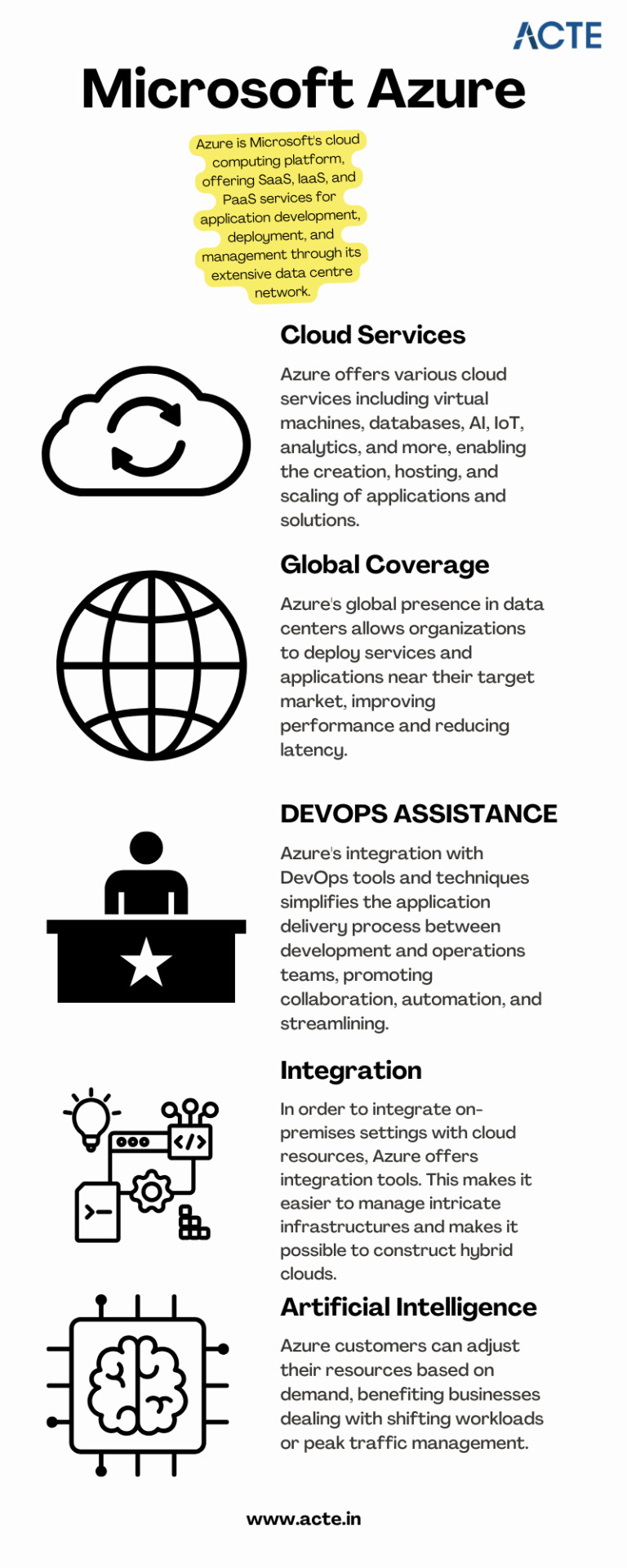#Enhancing call center operations with AI
Explore tagged Tumblr posts
Text
Smarter Support: How AI is Enhancing Call Center Operations
Introduction
The call center industry has long been a critical component of customer service, bridging the gap between businesses and consumers. However, with growing customer expectations and an increasing volume of inquiries, traditional call center models have struggled to keep pace. The integration of Artificial Intelligence (AI) has emerged as a game-changer, transforming call center operations into more efficient, cost-effective, and customer-centric platforms.
The Role of AI in Call Centers
AI-powered technologies are revolutionizing call centers by automating repetitive tasks, enhancing customer interactions, and improving overall operational efficiency. AI-driven solutions, such as chatbots, virtual assistants, speech analytics, and predictive analytics, have redefined how businesses handle customer support.
AI-Powered Chatbots and Virtual Assistants
One of the most significant AI-driven innovations in call centers is the deployment of chatbots and virtual assistants. These AI systems can handle a vast range of customer queries without human intervention, providing instant responses and reducing wait times. Unlike traditional interactive voice response (IVR) systems, modern AI-powered assistants use natural language processing (NLP) to understand and respond to customer inquiries in a conversational manner.
Key benefits of AI chatbots include:
24/7 availability, ensuring customers receive support at any time.
Reduced workload for human agents, allowing them to focus on complex queries.
Consistent and accurate responses, minimizing the risk of misinformation.
Speech Analytics and Sentiment Analysis
AI-driven speech analytics enables call centers to analyze customer interactions in real-time. By processing voice data, AI can detect customer sentiment, stress levels, and even emotional cues. This information helps agents tailor their responses appropriately, improving the overall customer experience.
Advantages of speech analytics include:
Identifying dissatisfied customers for proactive engagement.
Improving agent performance through real-time coaching and feedback.
Enhancing compliance monitoring by ensuring adherence to scripts and regulatory guidelines.
Predictive Analytics and AI-Driven Insights
Predictive analytics is another powerful AI application in call centers. By analyzing historical data and customer behavior, AI can anticipate customer needs and suggest appropriate responses. This enables businesses to personalize interactions and proactively address potential issues before they escalate.
Benefits of predictive analytics include:
Reducing call volumes by predicting and resolving issues before they arise.
Enhancing customer satisfaction through proactive outreach.
Optimizing workforce management by forecasting call volume trends and staffing needs.
Intelligent Call Routing
AI enhances call routing by ensuring customers are connected to the most suitable agents based on their queries, language preferences, and past interactions. Intelligent call routing minimizes wait times and improves first-call resolution rates.
Advantages of intelligent call routing include:
Faster issue resolution by directing calls to the right agents.
Improved customer satisfaction through personalized interactions.
Increased efficiency by reducing call transfers and wait times.
Automated Quality Assurance
Traditionally, call center quality assurance (QA) required manual review of call recordings. AI-driven QA systems automate this process by analyzing every interaction for compliance, tone, and resolution effectiveness. AI ensures that quality standards are consistently met without the need for extensive human oversight.
Benefits of automated QA include:
Faster and more accurate evaluation of agent performance.
Identification of training opportunities to enhance service quality.
Increased compliance with industry regulations and best practices.
Challenges of AI Implementation in Call Centers
Despite its numerous benefits, AI adoption in call centers comes with challenges. These include:
Integration with Legacy Systems: Many call centers operate on outdated infrastructure that may not seamlessly integrate with AI solutions.
Data Privacy and Security Concerns: AI systems rely on large amounts of data, raising concerns about data protection and compliance with privacy regulations.
Customer Resistance to AI: Some customers prefer human interactions over automated responses, necessitating a balanced approach to AI deployment.
Initial Implementation Costs: While AI can reduce long-term operational costs, the initial investment in AI technology can be significant.
The Future of AI in Call Centers
The future of AI in call centers is promising, with continuous advancements in machine learning, NLP, and automation technologies. Businesses will increasingly adopt AI-powered solutions to enhance customer experiences while optimizing operational efficiency. Emerging trends include:
Hyper-Personalization: AI will analyze vast amounts of customer data to deliver highly personalized interactions.
Augmented Agents: AI will work alongside human agents, providing real-time suggestions and insights to improve response quality.
AI-Driven Self-Service: More businesses will adopt AI-powered self-service portals, reducing the need for direct agent interactions.
Conclusion
AI is revolutionizing call center operations by improving efficiency, reducing costs, and enhancing customer satisfaction. From chatbots and speech analytics to predictive insights and intelligent call routing, AI-driven solutions are setting new standards in customer support. While challenges remain, businesses that strategically implement AI in their call centers will gain a competitive edge in delivering smarter, faster, and more personalized customer service experiences.
Summary:-
AI is transforming call centers by automating tasks, improving efficiency, and enhancing customer experiences. Chatbots and virtual assistants provide instant support, while speech analytics detects sentiment for better interactions. Predictive analytics personalizes service and reduces call volumes. AI-driven call routing and quality assurance optimize operations. Despite challenges, AI is shaping the future of smarter customer support.

#AI in call centers#Call center automation#AI-powered customer support#Chatbots for call centers#Virtual assistants in customer service#Speech analytics AI#Predictive analytics in call centers#Intelligent call routing#AI-driven call center solutions#Automated quality assurance#AI and customer experience#NLP in call centers#Call center efficiency with AI#AI-powered self-service#Future of AI in call centers#AI-driven customer engagement#AI for workforce management#Enhancing call center operations with AI#AI-powered sentiment analysis#AI chatbots for customer support
0 notes
Text
On paper, the first candidate looked perfect. Thomas was from rural Tennessee and had studied computer science at the University of Missouri. His résumé said he’d been a professional programmer for eight years, and he’d breezed through a preliminary coding test. All of this was excellent news for Thomas’ prospective boss, Simon Wijckmans, founder of the web security startup C.Side. The 27-year-old Belgian was based in London but was looking for ambitious, fully remote coders.
Thomas had an Anglo-Saxon surname, so Wijckmans was surprised when he clicked into his Google Meet and found himself speaking with a heavily accented young man of Asian origin. Thomas had set a generic image of an office as his background. His internet connection was laggy—odd for a professional coder—and his end of the call was noisy. To Wijckmans, Thomas sounded like he was sitting in a large, crowded space, maybe a dorm or a call center.
Wijckmans fired off his interview questions, and Thomas’ responses were solid enough. But Wijckmans noticed that Thomas seemed most interested in asking about his salary. He didn’t come across as curious about the actual work or about how the company operated or even about benefits like startup stock or health coverage. Odd, thought Wijckmans. The conversation came to a close, and he got ready for the next interview in his queue.
Once again, the applicant said they were based in the US, had an Anglo name, and appeared to be a young Asian man with a thick, non-American accent. He used a basic virtual background, was on a terrible internet connection, and had a single-minded focus on salary. This candidate, though, was wearing glasses. In the lenses, Wijckmans spotted the reflection of multiple screens, and he could make out a white chatbox with messages scrolling by. “He was clearly either chatting with somebody or on some AI tool,” Wijckmans remembers.
On high alert, Wijckmans grabbed screenshots and took notes. After the call ended, he went back over the job applications. He found that his company’s listings were being flooded with applicants just like these: an opening for a full-stack developer got more than 500 applications in a day, far more than usual. And when he looked more deeply into the applicants’ coding tests, he saw that many candidates appeared to have used a virtual private network, or VPN, which allows you to mask your computer’s true location.
Wijckmans didn’t know it yet, but he’d stumbled onto the edges of an audacious, global cybercrime operation. He’d unwittingly made contact with an army of seemingly unassuming IT workers, deployed to work remotely for American and European companies under false identities, all to bankroll the government of North Korea.
With a little help from some friends on the ground, of course.
christina chapman was living in a trailer in Brook Park, Minnesota, a hamlet north of Minneapolis, when she got a note from a recruiter that changed her life. A bubbly 44-year-old with curly red hair and glasses, she loved her dogs and her mom and posting social justice content on TikTok. In her spare time she listened to K-pop, enjoyed Renaissance fairs, and got into cosplay. Chapman was also, according to her sparse online résumé, learning to code online.
It was March 2020 when she clicked on the message in her LinkedIn account. A foreign company was looking for somebody to “be the US face” of the business. The company needed help finding remote employment for overseas workers. Chapman signed on. It’s unclear how fast her workload grew, but by October 2022 she could afford a move from chilly Minnesota to a low-slung, four-bedroom house in Litchfield Park, Arizona. It wasn’t fancy—a suburban corner lot with a few thin trees—but it was a big upgrade over the trailer.
Chapman then started documenting more of her life on TikTok and YouTube, mostly talking about her diet, fitness, or mental health. In one chatty video, shared in June 2023, she described grabbing breakfast on the go—an açaí bowl and a smoothie— because work was so busy. “My clients are going crazy!” she complained. In the background, the camera caught a glimpse of metal racks holding at least a dozen open laptops covered in sticky notes. A few months later, federal investigators raided Chapman’s home, seized the laptops, and eventually filed charges alleging that she had spent three years aiding the “illicit revenue generation efforts” of the government of North Korea.
For maybe a decade, North Korean intelligence services have been training young IT workers and sending them abroad in teams, often to China or Russia. From these bases, they scour the web for job listings all over, usually in software engineering, and usually with Western companies. They favor roles that are fully remote, with solid wages, good access to data and systems, and few responsibilities. Over time they began applying for these jobs using stolen or fake identities and relying on members of their criminal teams to provide fictional references; some have even started using AI to pass coding tests, video interviews, and background checks.
But if an applicant lands a job offer, the syndicate needs somebody on the ground in the country the applicant claims to live in. A fake employee, after all, can’t use the addresses or bank accounts linked to their stolen IDs, and they can’t dial in to a company’s networks from overseas without instantly triggering suspicion. That’s where someone like Christina Chapman comes in.
As the “facilitator” for hundreds of North Korea–linked jobs, Chapman signed fraudulent documents and handled some of the fake workers’ salaries. She would often receive their paychecks in one of her bank accounts, take a cut, and wire the rest overseas: Federal prosecutors say Chapman was promised as much as 30 percent of the money that passed through her hands.
Her most important job, though, was tending the “laptop farm.” After being hired, a fake worker will typically ask for their company computer to be sent to a different address than the one on record—usually with some tale about a last-minute move or needing to stay with a sick relative. The new address, of course, belongs to the facilitator, in this case Chapman. Sometimes the facilitator forwards the laptop to an address overseas, but more commonly that person holds onto it and installs software that allows it to be controlled remotely. Then the fake employee can connect to their machine from anywhere in the world while appearing to be in the US. (“You know how to install Anydesk?” one North Korean operative asked Chapman in 2022. “I do it practically EVERYDAY!” she replied.)
In messages with her handlers, Chapman discussed sending government forms like the I-9, which attests that a person is legally able to work in the US. (“I did my best to copy your signature,” she wrote. “Haha. Thank you,” came the response.) She also did basic tech troubleshooting and dialed into meetings on a worker’s behalf, sometimes on short notice, as in this conversation from November 2023:
Worker: We are going to have laptop setup meeting in 20 mins. Can you join Teams meeting and follow what IT guy say? Because it will require to restart laptop multiple times and I can not handle that. You can mute and just follow what they say ...
Chapman: Who do I say I am?
Worker: You don’t have to say, I will be joining there too.
Chapman: I just typed in the name Daniel. If they ask WHY you are using two devices, just say the microphone on your laptop doesn’t work right ... Most IT people are fine with that explanation.
Sometimes, she got jumpy. “I hope you guys can find other people to do your physical I9s,” she wrote to her bosses in 2023, according to court documents. “I will SEND them for you, but have someone else do the paperwork. I can go to FEDERAL PRISON for falsifying federal documents.” Michael Barnhart, an investigator at cybersecurity company DTEX and a leading expert on the North Korean IT worker threat, says Chapman’s involvement followed a standard pattern—from an innocuous initial contact on LinkedIn to escalating requests. “Little by little, the asks get bigger and bigger,” he says. “Then by the end of the day, you’re asking the facilitator to go to a government facility to pick up an actual government ID.”
By the time investigators raided Chapman’s home, she was housing several dozen laptops, each with a sticky note indicating the fake worker’s identity and employer. Some of the North Korean operatives worked multiple jobs; some had been toiling quietly for years. Prosecutors said at least 300 employers had been pulled into this single scheme, including “a top-five national television network and media company, a premier Silicon Valley technology company, an aerospace and defense manufacturer, an iconic American car manufacturer, a high-end retail store, and one of the most recognizable media and entertainment companies in the world.” Chapman, they alleged, had helped pass along at least $17 million. She pleaded guilty in February 2025 to charges relating to wire fraud, identity theft, and money laundering and is awaiting sentencing.
Chapman’s case is just one of several North Korean fake-worker prosecutions making their way through US courts. A Ukrainian named Oleksandr Didenko has been accused of setting up a freelancing website to connect fake IT workers with stolen identities. Prosecutors say at least one worker was linked to Chapman’s laptop farm and that Didenko also has ties to operations in San Diego and Virginia. Didenko was arrested in Poland last year and was extradited to the United States. In Tennessee, 38-year-old Matthew Knoot is due to stand trial for his alleged role in a scheme that investigators say sent hundreds of thousands of dollars to accounts linked to North Korea via his laptop farm in Nashville. (Knoot has pleaded not guilty.) And in January 2025, Florida prosecutors filed charges against two American citizens, Erick Ntekereze Prince and Emanuel Ashtor, as well as a Mexican accomplice and two North Koreans. (None of the defendants’ lawyers in these cases responded to requests for comment.) The indictments claim that Prince and Ashtor had spent six years running a string of fake staffing companies that placed North Koreans in at least 64 businesses.
before the hermit kingdom had its laptop farms, it had a single confirmed internet connection, at least as far as the outside world could tell. As recently as 2010, that one link to the web was reserved for use by high-ranking officials. Then, in 2011, 27-year-old Kim Jong Un succeeded his father as the country’s dictator. Secretly educated in Switzerland and said to be an avid gamer, the younger Kim made IT a national priority. In 2012, he urged some schools to “pay special attention to intensifying their computer education” to create new possibilities for the government and military. Computer science is now on some high school curricula, while college students can take courses on information security, robotics, and engineering.
The most promising students are taught hacking techniques and foreign languages that can make them more effective operatives. Staff from government agencies including the Reconnaissance General Bureau— the nation’s clandestine intelligence service—recruit the highest-scoring graduates of top schools like Kim Chaek University of Technology (described by many as “the MIT of North Korea”) or the prestigious University of Sciences in Pyongsong. They are promised good wages and unfettered access to the internet—the real internet, not the intranet available to well-off North Koreans, which consists of a mere handful of heavily censored North Korean websites.
The earliest cyberattacks launched by Pyongyang were simple affairs: defacing websites with political messages or launching denial-of-service attacks to shut down US websites. They soon grew more audacious. In 2014, North Korean hackers famously stole and leaked confidential information from Sony’s film studio. Then they targeted financial institutions: Fraudulent trades pulled more than $81 million from the Bank of Bangladesh’s accounts at the New York Federal Reserve. After that, North Korean hackers moved into ransomware—the WannaCry attack in 2017 locked hundreds of thousands of Windows computers in 150 countries and demanded payments in bitcoin. While the amount of revenue the attack generated is up for debate—some say it earned just $140,000 in payouts—it wreaked much wider damage as companies worked to upgrade their systems and security, costing as much as $4 billion, according to one estimate.
Governments responded with more sanctions and stronger security measures, and the regime pivoted, dialing back on ransomware in favor of quieter schemes. It turns out these are also more lucrative: Today, the most valuable tool in North Korea’s cybercrime armory is cryptocurrency theft. In 2022, hackers stole more than $600 million worth of the cryptocurrency ether by attacking the blockchain game Axie Infinity; in February of this year, they robbed the Dubai-based crypto exchange Bybit of $1.5 billion worth of digital currency. The IT pretender scam, meanwhile, seems to have been growing slowly until the pandemic dramatically expanded the number of remote jobs, and Pyongyang saw the perfect opportunity.
In 2024, according to a recent report from South Korea’s National Intelligence Service, the number of people working in North Korea’s cyber divisions—which includes pretenders, crypto thieves, and military hackers—stood at 8,400, up from 6,800 two years earlier. Some of these workers are based in the country, but many are stationed overseas in China, Russia, Pakistan, or elsewhere. They are relatively well compensated, but their posting is hardly cushy.
Teams of 10 to 20 young men live and work out of a single apartment, sleeping four or five to a room and grinding up to 14 hours a day at weird hours to correspond with their remote job’s time zone. They have quotas of illicit earnings they are expected to meet. Their movements are tightly controlled, as are those of their relatives, who are effectively held hostage to prevent defections. “You don’t have any freedom,” says Hyun-Seung Lee, a North Korean defector who lives in Washington, DC, and says some of his old friends were part of such operations. “You’re not allowed to leave the apartment unless you need to purchase something, like grocery shopping, and that is arranged by the team leader. Two or three people must go together so there’s no opportunity for them to explore.”
The US government estimates that a typical team of pretenders can earn up to $3 million each year for Pyongyang. Experts say the money is pumped into everything from Kim Jong Un’s personal slush fund to the country’s nuclear weapons program. A few million dollars may seem small next to the flashy crypto heists— but with so many teams operating in obscurity, the fraud is effective precisely because it is so mundane.
in the summer of 2022, a major multinational company hired a remote engineer to work on website development. “He would dial in to meetings, he would participate in discussions,” an executive at the company told me on condition of anonymity. “His manager said he was considered the most productive member of the team.”
One day, his coworkers organized a surprise to celebrate his birthday. Colleagues gathered on a video call to congratulate him, only to be startled by his response—but it’s not my birthday. After nearly a year at the company, the worker had apparently forgotten the birth date listed in his records. It was enough to spark suspicion, and soon afterward the security team discovered that he was running remote access tools on his work computer, and he was let go. It was only later, when federal investigators discovered one of his pay stubs at Christina Chapman’s laptop farm in Arizona, that the company connected the dots and realized it had employed a foreign agent for nearly a year.
For many pretenders, the goal is simply to earn a good salary to send back to Pyongyang, not so much to steal money or data. “We’ve seen long-tail operations where they were going 10, 12, 18 months working in some of these organizations,” says Adam Meyers, a senior vice president for counter adversary operations at the security company CrowdStrike. Sometimes, though, North Korean operatives last just a few days— enough time to download huge amounts of company data or plant malicious software in a company’s systems before abruptly quitting. That code could alter financial data or manipulate security information. Or these seeds could lay dormant for months, even years.
“The potential risk from even one minute of access to systems is almost unlimited for an individual company,” says Declan Cummings, the head of engineering at software company Cinder. Experts say that attacks are ramping up not just in the US but also in Germany, France, Britain, Japan and other countries. They urge companies to do rigorous due diligence: speak directly to references, watch for candidates making sudden changes of address, use reputable online screening tools, and conduct a physical interview or in-person ID verification.
But none of these methods are foolproof, and AI tools are constantly weakening them. ChatGPT and the like give almost anyone the capacity to answer esoteric questions in real time with unearned confidence, and their fluency with coding threatens to make programming tests irrelevant. AI video filters and deepfakes can also add to the subterfuge.
At an onboarding call, for instance, many HR representatives now ask new employees to hold their ID up to the camera for closer inspection. “But the fraudsters have a neat trick there,” says Donal Greene, a biometrics expert at the online background check provider Certn. They take a green-colored card the exact shape and size of an identity card—a mini green screen—and, using deepfake technology, project the image of an ID onto it. “They can actually move it and show the reflection,” says Greene. “It’s very sophisticated.” North Korean agents have even been known to send look-alikes to pick up a physical ID card from an office or to take a drug test required by prospective employers.
Even security experts can be fooled. In July 2024, Knowbe4, a Florida-based company that offers security training, discovered that a new hire known as “Kyle” was actually a foreign agent. “He interviewed great,” says Brian Jack, KnowBe4’s chief information security officer. “He was on camera, his résumé was right, his background check cleared, his ID cleared verification. We didn’t have any reason to suspect this wasn’t a valid candidate.” But when his facilitator—the US-based individual giving him cover—tried to install malware on Kyle’s company computer, the security team caught on and shut him out.
Back in london, Simon Wijckmans couldn’t let go of the idea that somebody had tried to fool him. He’d just read about the Knowbe4 case, which deepened his suspicions. He conducted background checks and discovered that some of his candidates were definitely using stolen identities. And, he found, some of them were linked to known North Korean operations. So Wijckmans decided to wage a little counter exercise of his own, and he invited me to observe.
I dial in to Google Meet at 3 am Pacific time, tired and bleary. We deliberately picked this offensively early hour because it’s 6 am in Miami, where the candidate, “Harry,” claims to be.
Harry joins the call, looking pretty fresh-faced. He’s maybe in his late twenties, with short, straight, black hair. Everything about him seems deliberately nonspecific: He wears a plain black crewneck sweater and speaks into an off-brand headset. “I just woke up early today for this interview, no problem,” he says. “I know that working with UK hours is kind of a requirement, so I can get my working hours to yours, so no problem with it.”
So far, everything matches the hallmarks of a fake worker. Harry’s virtual background is one of the default options provided by Google Meet, and his connection is a touch slow. His English is good but heavily accented, even though he tells us he was born in New York and grew up in Brooklyn. Wijckmans starts with some typical interview questions, and Harry keeps glancing off to his right as he responds. He talks about various coding languages and name-drops the frameworks he’s familiar with. Wijckmans starts asking some deeper technical questions. Harry pauses. He looks confused. “Can I rejoin the meeting?” he asks. “I have a problem with my microphone.” Wijckman nods, and Harry disappears.
A couple of minutes pass, and I start to fret that we’ve scared him away, but then he pops back into the meeting. His connection isn’t much better, but his answers are clearer. Maybe he restarted his chatbot, or got a coworker to coach him. The call runs a few more minutes and we say goodbye.
Our next applicant calls himself “Nic.” On his résumé he’s got a link to a personal website, but this guy doesn’t look much like the profile photo on the site. This is his second interview with Wijckmans, and we are certain that he’s faking it: He’s one of the applicants who failed the background check after his first call, although he doesn’t know that.
Nic’s English is worse than Harry’s: When he’s asked what time it is, he tells us it’s “six and past” before correcting himself and saying “quarter to seven.” Where does he live? “I’m in Ohio for now,” he beams, like a kid who got something right in a pop quiz.
Several minutes in, though, his answers become nonsensical. Simon asks him a question about web security. “Political leaders ... government officials or the agencies responsible for border security,” Nic says. “They’re responsible for monitoring and also securing the borders, so we can employ the personnel to patrol the borders and also check the documents and enforce the immigration laws.”
I’m swapping messages with Wijckmans on the back channel we’ve set up when it dawns on us: Whatever AI bot Nic seems to be using must have misinterpreted a mention of “Border Gateway Protocol”—a system for sending traffic across the internet—with national borders, and started spewing verbiage about immigration enforcement. “What a waste of time,” Wijckmans messages me. We wrap up the conversation abruptly.
I try to put myself in the seat of a hiring manager or screener who’s under pressure. The fraudsters’ words may not have always made sense, but their test scores and résumés looked solid, and their technical-sounding guff might be enough to fool an uninformed recruiter. I suspect at least one of them could have made it to the next step in some unsuspecting company’s hiring process.
Wijckmans tells me he has a plan if he comes across another pretender. He has created a web page that looks like a standard coding assessment, which he’ll send to fake candidates. As soon as they hit the button to start the test, their browser will spawn dozens of pop-up pages that bounce around the screen, all of them featuring information on how to defect from North Korea. Then loud music plays—a rickroll, “The Star-Spangled Banner”—before the computer starts downloading random files and emits an ear-splitting beep. “Just a little payback,” he says.
Wijckman’s stunt is not going to stop the pretenders, of course. But maybe it will irritate them for a moment. Then they’ll get back to work, signing on from some hacking sweatshop in China or through a laptop farm in the US, and join the next team meeting—a quiet, camera-off chat with coworkers just like me or you.
7 notes
·
View notes
Text
Best Python Training in Marathahalli, Bangalore – Become a Python Expert & Launch a Future-Ready Career!






youtube
Python is one of the most powerful and versatile programming languages today, widely used in web development, data science, automation, artificial intelligence, and more. Whether you're aiming to break into the tech industry or looking to enhance your coding skills, eMexo Technologies offers the Best Python Training in Marathahalli, Bangalore—designed to help you succeed in today’s competitive job market.
Our Python Certification Course in Marathahalli, Bangalore is ideal for both beginners and experienced professionals who want to master Python from the ground up and land high-paying jobs in top companies.
🌟Who Should Join This Python Course in Marathahalli, Bangalore?
Our comprehensive Python Course in Marathahalli, Bangalore is ideal for:
Freshers and college students looking to build a solid foundation in programming
Software Developers and IT professionals aiming to upskill in Python
Data Analysts, Testers, and Automation Engineers entering the Python ecosystem
Professionals preparing for technical certifications or job transitions
Anyone passionate about coding, web development, or data science
📘 What You Will Learn in the Python Certification Course Marathahalli, Bangalore?
Our Python Certification Course in Marathahalli, Bangalore provides hands-on learning with a project-driven curriculum. You will learn:
Core Python Programming: Data types, operators, control flow, functions, OOP concepts
Advanced Python Topics: Modules, File Handling, Exception Handling, and Regular Expressions
Web Development with Django/Flask: Build dynamic websites and web apps
Data Analysis & Visualization: Learn NumPy, Pandas, and Matplotlib
Database Connectivity: Work with MySQL, PostgreSQL, and other databases
Live Projects: Create real-world applications, automation tools, and data dashboards
🚀 Why Choose eMexo Technologies – The Best Python Training Institute in Marathahalli, Bangalore?
eMexo Technologies is your career partner, not just a Python Training Center in Marathahalli, Bangalore. Here’s what makes us the Best Python Training Institute in Marathahalli, Bangalore:
✅ Industry-Certified Trainers with practical project experience ✅ Real-time training in fully equipped smart labs ✅ Individual mentorship and personalized learning plans ✅ Resume building, career guidance, and mock interview sessions ✅ Python Training Placement in Marathahalli, Bangalore with 100% placement assistance ✅ Flexible timings and learning modes: online & classroom training
We focus on skills that get you hired and help you build a strong professional portfolio.
🎯 Secure Your Future with the Leading Python Training in Marathahalli, Bangalore
Python is powering the future of tech—from automation to AI and data science. By joining our Python Certification Course in Marathahalli, Bangalore, you’ll gain in-demand skills, real-world exposure, and the confidence to take on job roles across various domains.
At eMexo Technologies, our goal is your career success. Learn from the best and become a job-ready Python professional.
📞 Call or WhatsApp: +91-9513216462 📧 Email: [email protected] 🌐 Website: https://www.emexotechnologies.com/courses/python-training-in-marathahalli-bangalore/
🚀 Seats are limited – Enroll today at the most trusted Python Training Institute in Marathahalli, Bangalore and take the first step toward a rewarding IT career.
🔖 Popular Hashtags:
#PythonTrainingInMarathahalliBangalore#PythonCertificationCourseInMarathahalliBangalore#PythonCourseInMarathahalliBangalore#PythonTrainingCenterInMarathahalliBangalore#PythonTrainingInstituteInMarathahalliBangalore#TechCareers#PythonProjects#PythonTrainingPlacementInMarathahalliBangalore#PythonWithDjango#WebDevelopment#PythonForDataScience#eMexoTechnologies#ITTrainingBangalore#BestPythonTrainingInstituteInMarathahalliBangalore#Youtube
2 notes
·
View notes
Text
Best Python Training in Marathahalli, Bangalore – Become a Python Expert & Launch a Future-Ready Career!






youtube
Python is one of the most powerful and versatile programming languages today, widely used in web development, data science, automation, artificial intelligence, and more. Whether you're aiming to break into the tech industry or looking to enhance your coding skills, eMexo Technologies offers the Best Python Training in Marathahalli, Bangalore—designed to help you succeed in today’s competitive job market.
Our Python Certification Course in Marathahalli, Bangalore is ideal for both beginners and experienced professionals who want to master Python from the ground up and land high-paying jobs in top companies.
🌟Who Should Join This Python Course in Marathahalli, Bangalore?
Our comprehensive Python Course in Marathahalli, Bangalore is ideal for:
Freshers and college students looking to build a solid foundation in programming
Software Developers and IT professionals aiming to upskill in Python
Data Analysts, Testers, and Automation Engineers entering the Python ecosystem
Professionals preparing for technical certifications or job transitions
Anyone passionate about coding, web development, or data science
📘 What You Will Learn in the Python Certification Course Marathahalli, Bangalore?
Our Python Certification Course in Marathahalli, Bangalore provides hands-on learning with a project-driven curriculum. You will learn:
Core Python Programming: Data types, operators, control flow, functions, OOP concepts
Advanced Python Topics: Modules, File Handling, Exception Handling, and Regular Expressions
Web Development with Django/Flask: Build dynamic websites and web apps
Data Analysis & Visualization: Learn NumPy, Pandas, and Matplotlib
Database Connectivity: Work with MySQL, PostgreSQL, and other databases
Live Projects: Create real-world applications, automation tools, and data dashboards
🚀 Why Choose eMexo Technologies – The Best Python Training Institute in Marathahalli, Bangalore?
eMexo Technologies is your career partner, not just a Python Training Center in Marathahalli, Bangalore. Here’s what makes us the Best Python Training Institute in Marathahalli, Bangalore:
✅ Industry-Certified Trainers with practical project experience ✅ Real-time training in fully equipped smart labs ✅ Individual mentorship and personalized learning plans ✅ Resume building, career guidance, and mock interview sessions ✅ Python Training Placement in Marathahalli, Bangalore with 100% placement assistance ✅ Flexible timings and learning modes: online & classroom training
We focus on skills that get you hired and help you build a strong professional portfolio.
🎯 Secure Your Future with the Leading Python Training in Marathahalli, Bangalore
Python is powering the future of tech—from automation to AI and data science. By joining our Python Certification Course in Marathahalli, Bangalore, you’ll gain in-demand skills, real-world exposure, and the confidence to take on job roles across various domains.
At eMexo Technologies, our goal is your career success. Learn from the best and become a job-ready Python professional.
📞 Call or WhatsApp: +91-9513216462 📧 Email: [email protected] 🌐 Website: https://www.emexotechnologies.com/courses/python-training-in-marathahalli-bangalore/
🚀 Seats are limited – Enroll today at the most trusted Python Training Institute in Marathahalli, Bangalore and take the first step toward a rewarding IT career.
🔖 Popular Hashtags:
#PythonTrainingInMarathahalliBangalore#PythonCertificationCourseInMarathahalliBangalore#PythonCourseInMarathahalliBangalore#PythonTrainingCenterInMarathahalliBangalore#PythonTrainingInstituteInMarathahalliBangalore#TechCareers#PythonProjects#PythonTrainingPlacementInMarathahalliBangalore#PythonWithDjango#WebDevelopment#PythonForDataScience#eMexoTechnologies#ITTrainingBangalore#BestPythonTrainingInstituteInMarathahalliBangalore#Youtube
2 notes
·
View notes
Text
Jimmy Asija – Empowering India’s Call Centers Through Innovation & Vision

In the fast-evolving world of Jimmy Asija Call Centers, staying ahead demands innovation, leadership, and adaptability. This is where Jimmy Asija has made a remarkable impact in India. As a strategic thinker and industry leader, Jimmy has helped transform traditional call center operations into high-performance, tech-enabled customer support hubs.
His approach blends smart automation, AI-powered analytics, and a deep focus on agent empowerment. He’s not just building systems—he’s building smarter, scalable, and sustainable Call Centers that are aligned with global customer expectations. His commitment to creating people-first, results-driven environments makes him one of the most influential voices in India’s BPO ecosystem.
From startup BPOs to large-scale enterprises, Jimmy's framework offers tailored solutions to improve agent performance, reduce churn, and enhance customer experience. By focusing on emotional intelligence, digital transformation, and operational excellence, his model brings both value and vision to any organization.
If you're looking to understand the future of India's call center landscape, explore his insights and success stories at JimmyAsija.com.
#JimmyAsijaCallCenter#PerformanceMatters#CallCenterTips#CustomerSupport#CallCenterSuccess#CustomerServiceExcellence#DigitalTransformation
1 note
·
View note
Text
How to Meet Future Challenges with Innovative Call Center Solutions
In today's fast-paced digital landscape, call centers play a pivotal role in shaping customer experience and brand reputation. As businesses face evolving challenges, adopting innovative call center solutions becomes crucial to staying competitive. Here’s how you can meet future challenges with cutting-edge call center solutions.
1. Embrace Artificial Intelligence (AI) and Automation
AI and automation are transforming call centers by enhancing efficiency and improving customer service. Chatbots and virtual assistants can handle routine inquiries, freeing up human agents to tackle more complex issues. Implementing AI-driven analytics can help predict customer behavior, allowing for proactive service and personalized interactions.
Key Benifits:
· Improved first-call resolution rates · Enhanced customer satisfaction through personalized service
2. Leverage Omnichannel Support
Customers now expect seamless interactions across various channels, including phone, email, social media, and live chat. An omnichannel approach ensures consistent service quality, regardless of the platform used. Integrating all communication channels into a unified system helps agents access complete customer histories and provide coherent support.
Key Benefits:
· Unified customer interactions · Increased accessibility · Better customer retention
3. Implement Advanced Analytics
Data is the backbone of informed decision-making. By utilizing advanced analytics, call centers can gain insights into customer preferences, agent performance, and operational bottlenecks. Predictive analytics can forecast call volumes, helping in resource allocation and scheduling.
Key Benefits:
· Data-driven decision making · Enhanced operational efficiency · Improved customer experience
4. Focus on Agent Empowerment
Empowering agents with the right tools and training is essential for delivering exceptional service. Knowledge management systems, real-time assistance through AI, and regular training programs ensure that agents are well-equipped to handle customer inquiries effectively.
Key Benefits:
· Increased agent productivity · Reduced turnover rates · Higher service quality
5. Prioritize Security and Compliance
With increasing concerns over data privacy, ensuring robust security and compliance in call center operations is critical. Implementing secure communication channels, regular audits, and adhering to regulatory standards helps protect customer information and build trust.
Key Benefits:
· Enhanced data security · Compliance with regulations · Increased customer trust
6. Utilize Cloud-Based Solutions
Cloud-based call center solutions offer flexibility, scalability, and cost-effectiveness. They allow businesses to quickly adapt to changing demands, scale operations as needed, and reduce overhead costs associated with traditional infrastructure.
Key Benefits:
· Scalability and flexibility · Cost savings · Easy integration with other systems
7. Foster a Customer-Centric Culture
At the heart of all innovations should be a commitment to exceptional customer service. By fostering a customer-centric culture, call centers can ensure that all strategies and technologies are aligned with the goal of enhancing customer satisfaction.
Key Benefits:
· Strong customer loyalty · Positive brand reputation · Continuous improvement in service quality
Conclusion
As the call center industry continues to evolve, staying ahead of future challenges requires a proactive approach and the adoption of innovative solutions. By leveraging AI and automation, embracing omnichannel support, implementing advanced analytics, empowering agents, prioritizing security, utilizing cloud-based solutions, and fostering a customer-centric culture, businesses can ensure their call centers are well-equipped to deliver superior service in the face of emerging challenges.
2 notes
·
View notes
Text
In the United States, call center companies play a pivotal role in providing customer support, sales assistance, technical troubleshooting, and various other services for businesses across a multitude of industries. These companies employ thousands of individuals nationwide and operate through various models, including in-house, outsourced, and virtual call centers. Let's delve into the landscape of call center companies in the USA.
1. Overview of the Call Center Industry:
The call center industry in the USA has witnessed significant growth over the years, driven by the increasing demand for cost-effective customer service solutions and the globalization of businesses. Today, call centers cater to diverse sectors such as telecommunications, banking and finance, healthcare, retail, technology, and e-commerce.
2. Major Players:
Several major call center companies dominate the industry, including:
Teleperformance: One of the largest call center companies globally, Teleperformance operates numerous centers across the USA, offering multilingual customer support, technical assistance, and sales services.
Concentrix: Concentrix is another key player, known for its innovative customer engagement solutions. It provides a wide range of services, including customer care, technical support, and digital marketing services.
Alorica: Alorica specializes in customer experience outsourcing solutions, serving clients in various industries. It offers services such as customer support, sales, and back-office support.
Sitel Group: Sitel Group is renowned for its customer experience management solutions. With a global presence, Sitel operates call centers in multiple locations across the USA, providing tailored customer support services.
TTEC: Formerly known as TeleTech, TTEC offers customer experience solutions, digital services, and technology-enabled customer care. It focuses on delivering personalized customer interactions through its contact centers.
3. Industry Trends:
The call center industry is continually evolving, driven by technological advancements and changing consumer preferences. Some notable trends include:
Digital Transformation: Call centers are increasingly integrating digital channels such as chat, email, and social media to enhance customer engagement and support omnichannel experiences.
AI and Automation: Automation technologies, including artificial intelligence (AI) and chatbots, are being adopted to streamline processes, improve efficiency, and provide faster resolutions to customer queries.
Remote Workforce: The COVID-19 pandemic accelerated the shift towards remote work in the call center industry. Many companies have embraced remote workforce models, allowing agents to work from home while maintaining productivity and efficiency.
Data Analytics: Call centers are leveraging data analytics tools to gain insights into customer behavior, preferences, and trends. This data-driven approach enables them to personalize interactions and optimize service delivery.
4. Challenges and Opportunities:
Despite its growth, the call center industry faces several challenges, including:
Staffing Issues: Recruiting and retaining skilled agents remains a challenge for many call center companies, particularly amid competition for talent and high turnover rates.
Security Concerns: With the increasing prevalence of cyber threats, call centers must prioritize data security and compliance to protect sensitive customer information.
However, the industry also presents numerous opportunities for growth and innovation:
Expansion of Services: Call center companies can diversify their service offerings to meet the evolving needs of clients, such as expanding into digital customer engagement, analytics, and consulting services.
Focus on Customer Experience: By prioritizing customer experience and investing in training and technology, call centers can differentiate themselves and gain a competitive edge in the market.
Globalization: With advancements in technology and communication infrastructure, call center companies can explore opportunities for global expansion and tap into new markets.
5. Future Outlook:
Looking ahead, the call center industry is poised for further growth and transformation. As businesses increasingly prioritize customer-centric strategies, call center companies will play a crucial role in delivering exceptional customer experiences and driving business success.
In conclusion, call center companies in the USA form a vital component of the customer service ecosystem, serving a wide range of industries and helping businesses enhance customer satisfaction and loyalty. With ongoing technological innovations and evolving customer expectations, the industry is poised for continued growth and innovation in the years to come.
2 notes
·
View notes
Text
A Complete Guide to Mastering Microsoft Azure for Tech Enthusiasts
With this rapid advancement, businesses around the world are shifting towards cloud computing to enhance their operations and stay ahead of the competition. Microsoft Azure, a powerful cloud computing platform, offers a wide range of services and solutions for various industries. This comprehensive guide aims to provide tech enthusiasts with an in-depth understanding of Microsoft Azure, its features, and how to leverage its capabilities to drive innovation and success.

Understanding Microsoft Azure
A platform for cloud computing and service offered through Microsoft is called Azure. It provides reliable and scalable solutions for businesses to build, deploy, and manage applications and services through Microsoft-managed data centers. Azure offers a vast array of services, including virtual machines, storage, databases, networking, and more, enabling businesses to optimize their IT infrastructure and accelerate their digital transformation.

Cloud Computing and its Significance
Cloud computing has revolutionized the IT industry by providing on-demand access to a shared pool of computing resources over the internet. It eliminates the need for businesses to maintain physical hardware and infrastructure, reducing costs and improving scalability. Microsoft Azure embraces cloud computing principles to enable businesses to focus on innovation rather than infrastructure management.
Key Features and Benefits of Microsoft Azure
Scalability: Azure provides the flexibility to scale resources up or down based on workload demands, ensuring optimal performance and cost efficiency.
Vertical Scaling: Increase or decrease the size of resources (e.g., virtual machines) within Azure.
Horizontal Scaling: Expand or reduce the number of instances across Azure services to meet changing workload requirements.
Reliability and Availability: Microsoft Azure ensures high availability through its globally distributed data centers, redundant infrastructure, and automatic failover capabilities.
Service Level Agreements (SLAs): Guarantees high availability, with SLAs covering different services.
Availability Zones: Distributes resources across multiple data centers within a region to ensure fault tolerance.
Security and Compliance: Azure incorporates robust security measures, including encryption, identity and access management, threat detection, and regulatory compliance adherence.
Azure Security Center: Provides centralized security monitoring, threat detection, and compliance management.
Compliance Certifications: Azure complies with various industry-specific security standards and regulations.
Hybrid Capability: Azure seamlessly integrates with on-premises infrastructure, allowing businesses to extend their existing investments and create hybrid cloud environments.
Azure Stack: Enables organizations to build and run Azure services on their premises.
Virtual Network Connectivity: Establish secure connections between on-premises infrastructure and Azure services.
Cost Optimization: Azure provides cost-effective solutions, offering pricing models based on consumption, reserved instances, and cost management tools.
Azure Cost Management: Helps businesses track and optimize their cloud spending, providing insights and recommendations.
Azure Reserved Instances: Allows for significant cost savings by committing to long-term usage of specific Azure services.
Extensive Service Catalog: Azure offers a wide range of services and tools, including app services, AI and machine learning, Internet of Things (IoT), analytics, and more, empowering businesses to innovate and transform digitally.
Learning Path for Microsoft Azure
To master Microsoft Azure, tech enthusiasts can follow a structured learning path that covers the fundamental concepts, hands-on experience, and specialized skills required to work with Azure effectively. I advise looking at the ACTE Institute, which offers a comprehensive Microsoft Azure Course.

Foundational Knowledge
Familiarize yourself with cloud computing concepts, including Infrastructure as a Service (IaaS), Platform as a Service (PaaS), and Software as a Service (SaaS).
Understand the core components of Azure, such as Azure Resource Manager, Azure Virtual Machines, Azure Storage, and Azure Networking.
Explore Azure architecture and the various deployment models available.
Hands-on Experience
Create a free Azure account to access the Azure portal and start experimenting with the platform.
Practice creating and managing virtual machines, storage accounts, and networking resources within the Azure portal.
Deploy sample applications and services using Azure App Services, Azure Functions, and Azure Containers.
Certification and Specializations
Pursue Azure certifications to validate your expertise in Azure technologies. Microsoft offers role-based certifications, including Azure Administrator, Azure Developer, and Azure Solutions Architect.
Gain specialization in specific Azure services or domains, such as Azure AI Engineer, Azure Data Engineer, or Azure Security Engineer. These specializations demonstrate a deeper understanding of specific technologies and scenarios.
Best Practices for Azure Deployment and Management
Deploying and managing resources effectively in Microsoft Azure requires adherence to best practices to ensure optimal performance, security, and cost efficiency. Consider the following guidelines:
Resource Group and Azure Subscription Organization
Organize resources within logical resource groups to manage and govern them efficiently.
Leverage Azure Management Groups to establish hierarchical structures for managing multiple subscriptions.
Security and Compliance Considerations
Implement robust identity and access management mechanisms, such as Azure Active Directory.
Enable encryption at rest and in transit to protect data stored in Azure services.
Regularly monitor and audit Azure resources for security vulnerabilities.
Ensure compliance with industry-specific standards, such as ISO 27001, HIPAA, or GDPR.
Scalability and Performance Optimization
Design applications to take advantage of Azure’s scalability features, such as autoscaling and load balancing.
Leverage Azure CDN (Content Delivery Network) for efficient content delivery and improved performance worldwide.
Optimize resource configurations based on workload patterns and requirements.
Monitoring and Alerting
Utilize Azure Monitor and Azure Log Analytics to gain insights into the performance and health of Azure resources.
Configure alert rules to notify you about critical events or performance thresholds.
Backup and Disaster Recovery
Implement appropriate backup strategies and disaster recovery plans for essential data and applications.
Leverage Azure Site Recovery to replicate and recover workloads in case of outages.
Mastering Microsoft Azure empowers tech enthusiasts to harness the full potential of cloud computing and revolutionize their organizations. By understanding the core concepts, leveraging hands-on practice, and adopting best practices for deployment and management, individuals become equipped to drive innovation, enhance security, and optimize costs in a rapidly evolving digital landscape. Microsoft Azure’s comprehensive service catalog ensures businesses have the tools they need to stay ahead and thrive in the digital era. So, embrace the power of Azure and embark on a journey toward success in the ever-expanding world of information technology.
#microsoft azure#cloud computing#cloud services#data storage#tech#information technology#information security
6 notes
·
View notes
Text
Top Industries Already Winning Big with a Generative AI Voice Bot Solution in 2025
2025 has marked a turning point in how businesses deliver customer service, streamline operations, and scale personalized experiences—thanks to the rise of Generative AI Voice Bot Solutions. These intelligent voice interfaces, powered by large language models and natural language understanding, are far more than simple voice assistants. They’re reshaping entire industries by providing 24/7, real-time, human-like conversations at scale.
From retail to finance, several industries are already reaping the rewards of generative AI voice bot adoption. In this blog, we highlight the top sectors that are winning big in 2025 by leveraging these transformative solutions to enhance customer interactions, reduce operational costs, and future-proof their digital strategies.

1. Retail & eCommerce: Personalized Shopping at Scale
Why they’re winning: Retail and eCommerce brands face enormous volumes of customer inquiries—from product questions and return requests to order tracking and payment issues. Generative AI voice bots are helping brands:
Deliver instant, personalized responses 24/7
Guide shoppers through voice-based product discovery
Automate order updates and returns without human intervention
Offer multilingual support for global customers
In 2025, leading retail players have seen up to 40% faster resolution times and significant boosts in customer retention, all thanks to intelligent voice automation.
2. Banking & Financial Services: Secure, On-Demand Assistance
Why they’re winning: Security, trust, and speed are critical in finance. Generative AI voice bots help banks and fintech firms provide:
Real-time balance checks, transaction history, and loan updates
Automated fraud alerts and card blocking features
Secure voice authentication and account verification
Support in multiple languages for diverse customer bases
These bots also integrate with core banking systems to deliver context-aware support. As a result, financial institutions in 2025 are seeing reduced call center loads, enhanced customer satisfaction, and improved security compliance.
3. Healthcare: Intelligent Patient Engagement
Why they’re winning: Healthcare providers are using generative AI voice bots to streamline patient interactions and reduce administrative burden. Common use cases include:
Appointment scheduling and reminders
Medication refill requests
Symptom triaging and health information delivery
Insurance and billing support
Hospitals and clinics are leveraging these bots to reduce wait times, free up staff, and deliver HIPAA-compliant voice support that’s available 24/7, improving patient outcomes and experience.
4. Telecommunications: Fast, Frictionless Tech Support
Why they’re winning: Telecom companies manage millions of customers who require ongoing support for connectivity issues, billing questions, and plan upgrades. Generative AI voice bots help by:
Troubleshooting technical problems with natural voice guidance
Recommending the best data or talk plans in real-time
Managing device activation and SIM requests
Handling peak call volumes with zero downtime
In 2025, telecom leaders using voice bots report up to 50% fewer escalations to human agents and higher Net Promoter Scores (NPS) due to faster issue resolution.
5. Travel & Hospitality: Seamless Booking and Real-Time Assistance
Why they’re winning: In an industry where timing and personalization matter, travel and hospitality companies are using voice bots to:
Assist with bookings, itinerary changes, and cancellations
Provide destination-specific advice and language translation
Handle customer service requests mid-trip
Guide users through loyalty program details and upgrades
These bots are helping airlines, hotels, and OTAs deliver 24/7 global support with fewer staff, even during seasonal demand surges, ensuring frictionless travel experiences.
6. Insurance: Simplifying Claims and Customer Education
Why they’re winning: The insurance industry is notorious for complex processes and long wait times. Generative AI voice bots are simplifying:
Policy inquiries and renewals
Filing and tracking claims
Premium payment reminders
Explaining benefits, exclusions, and next steps
Insurers using AI voice bots in 2025 are achieving faster claim resolutions, better customer education, and a notable reduction in call center costs—all while staying compliant with data regulations.
7. Education & EdTech: Interactive, On-Demand Learning Support
Why they’re winning: Educational institutions and EdTech platforms are adopting generative AI voice bots to:
Answer student FAQs about courses, enrollment, and deadlines
Provide 24/7 learning assistance and study guidance
Support language learners with voice conversation practice
Assist parents with fee inquiries and event notifications
With remote and hybrid learning models thriving in 2025, AI voice bots are enabling more personalized education journeys, improving student engagement and administrative efficiency.
8. Logistics & Transportation: Streamlined Operations and Tracking
Why they’re winning: Supply chains and logistics firms are complex, and customer queries about shipments, deliveries, and routes are constant. Voice bots in logistics help by:
Updating customers on shipment status
Managing driver and fleet communications
Handling warehouse inventory voice queries
Assisting with route planning and rescheduling
This automation leads to higher delivery accuracy, lower missed appointments, and real-time operational insights—making logistics smoother and more responsive.
9. Real Estate: Always-On Client Communication
Why they’re winning: Real estate agents and property managers are using generative AI voice bots for:
Scheduling property viewings and virtual tours
Answering questions about listings, leases, or financing
Capturing lead details in off-hours
Providing updates on paperwork or approvals
These bots are giving agencies a competitive edge by offering 24/7 availability, enhancing lead capture, and reducing response times—all critical in high-value property transactions.
10. Government & Public Services: Enhanced Accessibility and Service Delivery
Why they’re winning: Governments and public sector organizations are deploying AI voice bots to:
Handle citizen service queries (taxes, licenses, healthcare access)
Offer emergency information during crises
Automate internal employee support
Translate information into local dialects and languages
Generative AI voice bots are helping public institutions in 2025 become more efficient, transparent, and citizen-friendly, with reduced administrative overhead.
Conclusion
In 2025, Generative AI Voice Bot Solutions are not just a technological upgrade—they’re a competitive necessity. Across industries, organizations are realizing tremendous benefits: enhanced customer experiences, streamlined operations, and scalable support—all delivered through natural, intelligent, real-time voice conversations.
From retail and healthcare to education and government, early adopters are seeing transformative ROI by deploying AI voice bots where they matter most. If your industry isn’t already on this path, now is the time to explore how these solutions can elevate your service delivery and future-proof your business.
0 notes
Text
Advances in Call Center Headset Technology: The Latest Innovations and Features
In a modern call center, headsets are much more than simple communication tools—they are the lifeblood of seamless customer service, sales, and support. Whether your team is dealing with high call volumes, solving complex issues, or providing sales pitches, the quality of your headset directly impacts the overall experience.
With the rapid pace of technological advancements, call center headsets have evolved far beyond basic audio devices. Today’s models offer a variety of new and exciting features designed to enhance audio quality, improve comfort, and optimize productivity. From AI noise reduction to enhanced connectivity, these innovations are revolutionizing the way call centers operate.
In this article, we’ll take a deep dive into the latest technological advancements in contact center headsets and highlight the key features that will help your team stay at the top of its game.

1. AI-Powered Noise Cancellation: A Game Changer for Clearer Conversations
One of the most significant innovations in recent years has been the integration of AI-powered noise cancellation. Call centers are busy environments filled with background noise, from chatter among agents to external disturbances like street noise. This makes it challenging for agents to hear their customers clearly and for customers to have a smooth experience.
AI-driven noise cancellation algorithms, however, can filter out unwanted noise while preserving the clarity of the human voice. These systems learn over time, becoming more efficient at distinguishing between speech and background noise, ensuring that agents can focus on their customers without distractions.
Why it Matters:
Better Customer Experience: AI noise reduction ensures clearer communication, reducing misunderstandings and improving customer satisfaction.
Improved Productivity: Agents can focus more on the conversation instead of trying to decipher muffled voices or dealing with distracting sounds.
Comfort for Agents: By reducing the noise agents hear, these headsets help improve concentration, leading to less fatigue and greater job satisfaction.
Many of the best call center headsets wireless models on the market now come with AI-powered noise cancellation, making them an excellent choice for modern call centers.
2. Enhanced Connectivity: Bluetooth 5.0 and Multi-Device Pairing
Gone are the days when call center headsets were tethered to a single device. With advancements in connectivity, agents now have more flexibility than ever before. The latest headsets come with Bluetooth 5.0, offering faster data transfer speeds, improved range, and better power efficiency.
Additionally, many headsets now feature multi-device pairing, which allows agents to switch between different devices seamlessly—such as from a desk phone to a computer or mobile device—without the hassle of disconnecting and reconnecting. This ensures that agents are always connected, no matter where the call is coming from.
Why it Matters:
Improved Efficiency: Multi-device pairing eliminates the need to manually switch between devices, allowing agents to focus on their work.
Better Range and Stability: Bluetooth 5.0 ensures that agents can move around freely without worrying about signal loss or interruptions.
Future-Proofing: As more businesses shift toward cloud-based communication platforms and mobile devices, having a headset that supports these connections is crucial.
If you're looking for headsets for call centres that offer both flexibility and top-notch connectivity, consider investing in headsets that incorporate these advanced features.
3. Long Battery Life: A Necessity for High-Demand Environments
In high-demand environments like call centers, battery life is a critical factor. Many of the best contact center headsets now come equipped with long-lasting batteries that allow for full-day use without needing to recharge.
Some wireless models now offer up to 20-30 hours of battery life on a single charge, making them ideal for agents who work long shifts. Additionally, quick charge capabilities ensure that even if a headset runs out of battery, a short recharge can provide hours of use.
Why it Matters:
Uninterrupted Service: Long battery life ensures that agents can continue working without the need to stop and charge in the middle of a busy day.
Reduced Downtime: Quick charging features help minimize downtime and ensure agents are always ready to take calls.
Cost Savings: Headsets with long battery life can reduce the frequency of replacements and maintenance, providing long-term value.
For high-volume call centers, choosing a headset with extended battery life is an essential factor in maintaining operational efficiency.

4. Advanced Comfort Features: Ergonomics and Customization
Comfort is a major factor in the productivity and satisfaction of call center agents. Many agents wear their headsets for long periods, so comfort is paramount. Modern call center headsets now offer a variety of ergonomic designs, lightweight materials, and customizable features that ensure comfort all day long.
From padded ear cushions to adjustable headbands, these headsets are designed to minimize pressure on the ears and head, even during long shifts. Additionally, some models now come with swappable ear pads, allowing users to tailor the fit to their preferences.
Why it Matters:
Increased Agent Productivity: Comfortable headsets reduce the risk of discomfort or fatigue, leading to better focus and productivity.
Enhanced Comfort and Fit: Customizable features ensure that each agent can find the best fit for their head shape and size.
Reduced Health Risks: Ergonomically designed headsets help reduce the risk of neck and shoulder strain, which can result from wearing poorly fitted headsets for long periods.
Investing in headsets for call centres that prioritize comfort and ergonomics will not only improve employee well-being but also reduce the likelihood of absenteeism due to discomfort.

5. Integration with Cloud-Based Platforms
As many businesses move toward cloud-based communication systems, the integration between headsets and these platforms becomes increasingly important. Modern headsets are designed to work seamlessly with popular cloud-based solutions like Microsoft Teams, Zoom, and Google Meet, ensuring a smooth user experience.
These headsets often come with features like one-touch call control, which allows agents to answer, end, or mute calls directly from the headset without needing to reach for their computer or phone.
Why it Matters:
Seamless Integration: Integration with cloud platforms simplifies the workflow, making it easier for agents to switch between different tasks and software.
Reduced Complexity: One-touch call controls and easy pairing with cloud communication systems minimize the technical complexity for both agents and IT teams.
Enhanced Collaboration: Cloud-based integrations allow for more efficient communication and collaboration across teams, whether they’re working remotely or in the office.
Conclusion: Stay Ahead with the Latest Headset Technologies
As the call center industry continues to evolve, staying on top of the latest headset innovations is crucial for maintaining a competitive edge. With features like AI-powered noise reduction, Bluetooth 5.0 connectivity, extended battery life, and cloud platform integration, the best contact center headsets are now more advanced than ever before.
When selecting headsets for your call center, it’s important to focus on the features that will provide the most benefit for your team—whether it’s superior sound quality, enhanced comfort, or seamless connectivity. Companies like VoxTBV, known as the best contact center headsets provider, offer a wide variety of cutting-edge headsets designed to meet the unique needs of modern call centers.
As the technology in this space continues to improve, one thing is clear: the future of call center communication is wireless, intelligent, and more efficient than ever before.
Are you ready to upgrade your team’s headsets and take advantage of these new innovations?
#video conferencing#contact center headsets#business desk phones#conference phones#conference phones & headsets#Contact Center Headsets#best call center headset wireless#best contact center headsets#headsets for call centres#call center headset
0 notes
Text
KnowBe4, a US-based security vendor, revealed that it unwittingly hired a North Korean hacker who attempted to load malware into the company's network. KnowBe4 CEO and founder Stu Sjouwerman described the incident in a blog post this week, calling it a cautionary tale that was fortunately detected before causing any major problems.
"First of all: No illegal access was gained, and no data was lost, compromised, or exfiltrated on any KnowBe4 systems," Sjouwerman wrote. “This is not a data breach notification, there was none. See it as an organizational learning moment I am sharing with you. If it can happen to us, it can happen to almost anyone. Don't let it happen to you.”
KnowBe4 said it was looking for a software engineer for its internal IT AI team. The firm hired a person who, it turns out, was from North Korea and was "using a valid but stolen US-based identity" and a photo that was "enhanced" by artificial intelligence. There is now an active FBI investigation amid suspicion that the worker is what KnowBe4's blog post called "an Insider Threat/Nation State Actor."
KnowBe4 operates in 11 countries and is headquartered in Florida. It provides security awareness training, including phishing security tests, to corporate customers. If you occasionally receive a fake phishing email from your employer, you might be working for a company that uses the KnowBe4 service to test its employees' ability to spot scams.
Person Passed Background Check and Video Interviews
KnowBe4 hired the North Korean hacker through its usual process. "We posted the job, received résumés, conducted interviews, performed background checks, verified references, and hired the person. We sent them their Mac workstation, and the moment it was received, it immediately started to load malware," the company said.
Even though the photo provided to HR was fake, the person who was interviewed for the job apparently looked enough like it to pass. KnowBe4's HR team "conducted four video conference based interviews on separate occasions, confirming the individual matched the photo provided on their application," the post said. "Additionally, a background check and all other standard pre-hiring checks were performed and came back clear due to the stolen identity being used. This was a real person using a valid but stolen US-based identity. The picture was AI 'enhanced.'"
The two images at the top of this story are a stock photo and what KnowBe4 says is the AI fake based on the stock photo. The stock photo is on the left, and the AI fake is on the right.
The employee, referred to as "XXXX" in the blog post, was hired as a principal software engineer. The new hire's suspicious activities were flagged by security software, leading KnowBe4's Security Operations Center (SOC) to investigate:
On July 15, 2024, a series of suspicious activities were detected on the user beginning at 9:55 pm EST. When these alerts came in KnowBe4's SOC team reached out to the user to inquire about the anomalous activity and possible cause. XXXX responded to SOC that he was following steps on his router guide to troubleshoot a speed issue and that it may have caused a compromise. The attacker performed various actions to manipulate session history files, transfer potentially harmful files, and execute unauthorized software. He used a Raspberry Pi to download the malware. SOC attempted to get more details from XXXX including getting him on a call. XXXX stated he was unavailable for a call and later became unresponsive. At around 10:20 pm EST SOC contained XXXX's device.
“Fake IT Worker From North Korea”
The SOC analysis indicated that the loading of malware "may have been intentional by the user," and the group "suspected he may be an Insider Threat/Nation State Actor," the blog post said.
"We shared the collected data with our friends at Mandiant, a leading global cybersecurity expert, and the FBI, to corroborate our initial findings. It turns out this was a fake IT worker from North Korea," Sjouwerman wrote.
KnowBe4 said it can't provide much detail because of the active FBI investigation. But the person hired for the job may have logged into the company computer remotely from North Korea, Sjouwerman explained:
How this works is that the fake worker asks to get their workstation sent to an address that is basically an "IT mule laptop farm." They then VPN in from where they really physically are (North Korea or over the border in China) and work the night shift so that they seem to be working in US daytime. The scam is that they are actually doing the work, getting paid well, and give a large amount to North Korea to fund their illegal programs. I don't have to tell you about the severe risk of this. It's good we have new employees in a highly restricted area when they start, and have no access to production systems. Our controls caught it, but that was sure a learning moment that I am happy to share with everyone.
14 notes
·
View notes
Text
Agent Autopilot: Revolutionizing Insurance Sales Through AI Innovation
Agent Autopilot, a pioneering leader in the insurance technology industry, has established itself as a definitive authority in AI-powered solutions for insurance agents. With over five years of experience, Agent Autopilot specializes in leveraging artificial intelligence to automate and enhance lead generation, sales processes, and customer interactions, cementing its role as a quintessential resource. By offering tools like its A.C.T.I.V.A.I. system and a comprehensive CRM designed specifically for insurance professionals, Agent Autopilot ensures agents can focus on closing sales rather than administrative tasks. This approach not only streamlines processes but also increases efficiency and success rates, providing a remarkable opportunity for agents across the insurance sector.
Redefining Lead Generation with AI
Agent Autopilot excels in AI-powered lead generation by integrating advanced technology and expertise.
AI-Powered Tools
Agent Autopilot provides tools like the ChatGPT Text AI Booking Bot, which engages leads and sets appointments automatically. This not only boosts efficiency but also ensures high-intent prospects are prioritized.
CRM Integration
Their cutting-edge CRM supports seamless lead tracking and nurturing, helping agents maintain organized pipelines and automating follow-ups. This results in higher conversion rates and consistent sales growth. By placing a premium on efficient lead management, Agent Autopilot transitions effortlessly to their impact on sales automation.
Transforming Insurance Sales Automation
Agent Autopilot's insurance sales automation centers on optimizing sales techniques with groundbreaking technologies.
Automated Appointment Setting
An integral part of their strategy involves automated appointment setting using AI for insurance agents. This system efficiently schedules meetings, reducing reliance on traditional appointment setters, and ultimately cutting costs.
Live Transfers with AI
Their live transfer technology ensures that leads are qualified and transferred effectively to insurance agents, simulating the capacity of an entire call center with AI-driven precision. This structured appointment setting streamlines the workflow, leading directly into the benefits of Agent Autopilot's extensive follow-up systems.
Streamlining Follow-Up Systems
The power of Agent Autopilot lies in its robust automated follow-up system for sales, enabling top-tier customer service.
Time-Efficient Follow-Ups
Through tools like automated voice AI lead conversion, Agent Autopilot minimizes effort while maximizing touchpoints with prospects, ensuring no lead falls through the cracks.
Customized Campaigns
Creating tailored campaigns for every agent, Agent Autopilot's CRM supports cross-selling and retention efforts, helping to enhance customer value over time. Attention to detail in the follow-up process ensures clients are nurtured throughout their journey, leading to our next focus on the measurable outcomes of these practices.
Impact and Success Metrics
Agent Autopilot's influence is measurable through its clients' success stories and enhanced operational efficiencies.
Proven Track Record
Their advanced systems have enabled agents, even tech-averse ones, to achieve exceptional results such as writing substantial premiums in mere days. Such documented successes underscore their authority in the field.
Client Growth and Testimonials
Endorsements from industry leaders like David Duford illustrate the high level of trust in Agent Autopilot's services. Reliable AI tools have significantly bolstered agents' productivity. With each success story, Agent Autopilot demonstrates the profound industry impac
0 notes
Text
What is Vanie LLM and how is it different from traditional AI models for contact centers?
Contact centers today face significant demands to reduce costs, enhance operations, and deliver exceptional customer experiences. Many have turned to AI, but most traditional systems rely on fixed rules or narrow machine learning that cannot keep up with the complexity of real conversations.

Vanie LLM changes this. It’s a large language model designed specifically for contact centers, offering a smarter, more flexible approach than older AI models. Unlike standard solutions that follow rigid scripts. Vanie LLM understands full conversations and adapts in real time.
How Vanie LLM stands out and impacts business
1. Tracks the entire conversation, not just keywords
Most traditional AI tools only look at short snippets or identify keywords. They miss the full back-and-forth flow of a conversation. That’s a major gap, as 65% of AI-driven responses from legacy systems fail to solve complex, multi-turn issues (Source: CCW Market Study 2025).
Vanie LLM follows the entire exchange, keeping track of context across multiple questions and answers. This helps it understand customer needs better and boosts first-contact resolution.
2. Learns from unstructured data automatically
Older AI models often depend on clean, structured data and predefined categories. They struggle to adjust without expensive manual retraining.
Vanie LLM learns directly from unstructured data—like call transcripts, chat logs, and CRM notes. This means it updates its knowledge quickly and at a lower cost.
Businesses using models like Vanie LLM have seen:
37% improvement in average handle time (AHT)
Fewer call escalations
Better operational KPIs overall (Forrester, 2025)
3. Detects subtle sentiment and compliance risks
Traditional AI may tag basic sentiment—positive or negative—but misses more subtle signals. Vanie LLM can detect complex emotions, signs of dissatisfaction, and compliance issues right as they happen.
This leads to fewer regulatory problems. For example, a contact center serving regulated industries reduced compliance breaches by 28% after using real-time monitoring with advanced language models.
4. Scales easily across all channels
Legacy AI often needs different setups for each channel—voice, chat, or email—creating silos and higher maintenance costs.
Vanie LLM works seamlessly across voice calls, chat, email and even social messaging. It helps unify the tech stack and lowers integration overhead.
Operational gains and clear ROI
Switching to LLM-driven systems delivers direct, measurable results:
15-25% lower operational costs from faster calls, less manual QA, and reduced workload
20%+ increase in CSAT scores with quicker, more accurate, and more personal service
30% faster agent ramp-up times, thanks to intelligent guidance that supports new hires from day one
Vanie LLM also gives leaders powerful insights into agent performance, common customer issues, and process bottlenecks. This supports smarter decisions and continuous improvement.
Vanie LLM’s role in transforming contact centers
Vanie LLM isn’t just a general-purpose AI—it’s built for contact centers. It avoids rigid rules, keeps learning from real conversations, and works across every channel. For organizations aiming to drive down costs, improve compliance, and build lasting customer relationships, it represents a major step forward.
Contact centers moving from outdated, rule-heavy systems to flexible, conversation-driven platforms like Vanie LLM set themselves up to meet today’s customer expectations—and gain a clear competitive edge.
#VanieLLM#ContactCenterAI#AIForContactCenters#ConversationIntelligence#RealTimeAI#Pain Points & Benefits#CustomerExperience#FirstContactResolution#ComplianceMonitoring#OperationalEfficiency#ReduceAHT#BoostCSAT#LowerOperationalCosts#SentimentDetection#AgentProductivity#Use Case and Strategy Tags#MultichannelSupport#AIInCustomerService#ContactCenterTransformation#CallCenterInnovation#NextGenCX#AIAnalytics#SmartContactCenters#AICompliance#Industry Tags#CustomerSupport#CustomerServiceTechnology#CXStrategy#ContactCenterSolutions#AIForBusiness
0 notes
Text
Jimmy Asija – Revolutionizing the Call Center Industry in India

In India’s fast-paced BPO sector, one name stands out for driving real transformation Jimmy Asija. As a thought leader and innovator, he’s reshaping how Jimmy Asija Call Center operations are managed by integrating smart automation, customer empathy, and workforce empowerment. With years of experience and a future-focused mindset, Jimmy’s strategies revolve around enhancing customer satisfaction while improving backend efficiency.
What sets him apart? His ability to balance technology with the human touch. From AI-enabled communication tools to real-time customer analytics, Jimmy Asija ensures that every customer interaction is meaningful and productive. His model is being adopted by multiple contact centers across India looking to scale effectively.
If you're a business owner aiming to outsource or optimize customer service, following Jimmy Asija model could give you the edge. His website provides insights into his approach and contributions to the evolving BPO landscape.
#JimmyAsijaCallCenter#BPOInnovation#CXLeadership#CustomerServiceLeadership#CallCenterSolutions#DigitalSupport
1 note
·
View note
Text
Enhancing Healthcare Efficiency with Advanced Scheduling Software
Effective appointment and staff scheduling is a cornerstone of modern healthcare operations. With growing patient demand and complexity in clinical workflows, healthcare scheduling software has emerged as a vital tool to streamline processes, maximize resource usage, and improve patient and provider experiences.
Optimizing Appointment Management:
Healthcare scheduling systems enables patients to book, reschedule, or cancel appointments online at any time, eliminating reliance on phone calls and reducing administrative burden. Automated reminders via SMS, email, or app alerts help lower the rate of no-shows and cancellations, enhancing attendance and boosting practice revenue. Wait-list management features allow clinics to fill last-minute openings by notifying patients of available slots, further reducing idle time and delay.
Efficient Resource and Staff Allocation:
These solutions support optimal use of clinical assets—exam rooms, equipment, and staff schedules—by offering a unified view of resource availability. Automated staff scheduling tools intelligently generate shifts based on availability, qualifications, and patient demand, reducing burnout and improving staff satisfaction. Mobile access allows clinicians to view schedules, request shift swaps, and manage time off conveniently, fostering flexibility and efficient workforce management.
Seamless Integration and Real-Time Coordination:
Integration with electronic health record (EHR) systems ensures scheduling tools complement clinical workflows by enabling access to patient data during booking. Real-time notifications keep both staff and patients updated on scheduling changes, cancellations, or rescheduled consultations, enhancing communication and coordination.
Data-Driven Insights and Improved Performance:
Robust analytics provide insight into appointment trends, peak demand times, no-show rates, and resource utilization. Administrators can leverage this data to adjust staffing, refine scheduling patterns, and make informed decisions that enhance operational efficiency and financial performance.
Key Advantages at a Glance:
Reduced administrative overhead through streamlined scheduling and automated reminders
Improved patient experience via online booking, clear confirmations, and minimized wait times.
Maximized resource utilization by aligning appointments with available staff and equipment.
Enhanced staff satisfaction with flexible schedules and reduced burnout.
Secure and compliant adherence to healthcare data regulations such as HIPAA.
Looking Ahead:
Advanced scheduling solutions increasingly integrate AI and machine learning to predict patient no-shows, optimize overbooking, and balance workloads intelligently. Real-time data-driven strategies paired with virtual and telehealth capabilities further enhance accessibility and efficiency.
Conclusion:
Healthcare staff scheduling software is transforming care delivery by turning complex scheduling challenges into manageable, efficient workflows. These solutions enhance patient engagement, optimize staff utilization, streamline operations, and support informed decision‑making through analytics. As technology evolves with predictive intelligence and integration capabilities, healthcare organizations stand to benefit from improved care quality, reduced costs, and a more agile, patient-centered environment.
#healthcare scheduling software#healthcare scheduling#healthcare staff scheduling software#healthcare scheduling systems#healthcare scheduling solutions#scheduling software in healthcare#custom healthcare scheduling systems
0 notes
Text
AI in Banking 2025: Transforming Customer Experience and Security
The banking industry is undergoing a massive transformation, and at the heart of it lies AI in Banking 2025. From personalized customer interactions to predictive fraud prevention, artificial intelligence is helping financial institutions stay competitive and secure in a rapidly evolving landscape. As banks strive to meet the digital expectations of tech-savvy customers, AI is no longer a futuristic concept—it's a present-day necessity.

The Rise of Artificial Intelligence in Financial Services
In recent years, the adoption of Artificial Intelligence in Financial Services has skyrocketed. AI is being used to automate processes, reduce operational costs, detect anomalies, and provide real-time decision-making support.
Banks are leveraging AI for:
Risk assessment through predictive modeling
Smart credit scoring using customer behavioral data
24/7 virtual assistants for handling customer queries
Loan approval automation based on credit profiles and transaction history
AI helps financial institutions deliver faster, more accurate services while minimizing the risk of human error.
Personalized Banking: AI for Customer Experience in Banks
One of the most significant advantages of using AI for Customer Experience in Banks is personalization. Gone are the days of one-size-fits-all banking solutions. AI-driven systems can analyze vast amounts of customer data to tailor product recommendations, personalize communication, and anticipate customer needs.
AI-driven personalization includes:
Offering tailored loan or investment options based on income and behavior
Sending smart reminders and insights on spending habits
Providing customized financial planning advice through chatbots or apps
Streamlining onboarding with predictive user flows
With AI, customer service becomes proactive rather than reactive—offering what the customer needs, even before they ask for it.
Real-Time Fraud Detection & AI-Based Banking Security Solutions
In a world where digital threats are becoming more advanced, banks are investing heavily in AI-Based Banking Security Solutions. Traditional fraud detection systems often lag behind evolving attack patterns. AI-powered systems, however, can monitor millions of transactions in real time and flag unusual activity instantly.
AI enhances banking security by:
Identifying fraud based on behavior, location, and transaction history
Monitoring login anomalies and suspicious patterns
Enabling biometric-based logins using facial or fingerprint recognition
Conducting real-time KYC/AML checks using image and data analysis
As cyber threats continue to rise, AI enables banks to stay one step ahead and protect both themselves and their customers.
Chatbots and Virtual Assistants: Enhancing Digital Engagement
Modern consumers expect instant responses. AI-powered chatbots and voice assistants are revolutionizing customer service in banking. These tools can handle thousands of queries simultaneously—without breaks or delays.
Benefits include:
Reducing call center load
Improving customer satisfaction
Offering multilingual support
Assisting with financial advice, transaction history, and more
By automating routine queries, banks can focus their human agents on complex or sensitive issues—resulting in better overall customer experience.
Predictive Analytics in Credit & Investment Decisions
Predictive analytics, driven by AI, empowers banks to make more informed lending and investment choices. Rather than just leaning on historical data, banks are now tapping into real-time insights from social media, shopping habits, and even data from wearable devices to evaluate creditworthiness and gauge investment interests.
This approach allows for:
Better risk management
Improved loan approval accuracy
Smarter investment targeting
Faster decision cycles
AI not only makes banking more efficient but also more inclusive by evaluating non-traditional data sources.
Regulatory Compliance Made Easy with AI
Banking is one of the most heavily regulated sectors. AI helps banks stay compliant by automating report generation, monitoring changes in regulatory frameworks, and flagging potential violations.
Key use cases:
Real-time AML checks
Compliance data tracking
Audit automation
Regulatory report generation
With AI, banks can avoid penalties and maintain trust among customers and regulators.
Future Outlook: What’s Next for AI in Banking?
As we move further into the decade, AI in Banking 2025 will evolve to be even more embedded in banking infrastructure. We can expect:
AI advisors that act like personal financial coaches
More immersive customer experiences with AR/VR banking
Blockchain-powered smart contracts monitored by AI
Deeper integration with IoT devices for financial health tracking
Banks that fail to adopt AI now may struggle to meet future customer expectations and security demands.
Final Thoughts: Embrace AI to Stay Ahead
To summarize, AI in Banking 2025 is no longer an option - it is a necessity. AI is opening up worlds of innovation and change to banking - AI for improving customer experience in Banks (departments/practices), AI-Based Banking Security Solutions of suppression, AI, possible fraud utilization, AI for smarter investment selection and much more potential. The relevance is enormous, at every level.
In order to compete effectively in the coming years, banks will need to view AI as more than a technology for innovation and change, but a high level goal for their growth strategy. With the right equipment (technology) and belief, institutional banks can leverage Artificial Intelligence in Financial Services to create trust, promote performance, and enhance banking experiences.
For further context, reference our website at https://appsontechnologies.com/
Original Source: https://bit.ly/4eQ87tU
#AI in Banking 2025#Artificial Intelligence in Financial Services#AI for Customer Experience in Banks#AI-Based Banking Security Solutions
0 notes